The glaze of Tenmoku belongs to the category of ancient Chinese crystalline glaze. During the firing process, due to the different kiln temperature and atmosphere in different parts of the kiln, the glaze will form various natural and unique patterns. These patterns are not controlled by artificial glaze colors, but rather are caused by changes in the glaze itself, and are called "kiln changes".
The success of Jian kiln lies in the kiln change patterns of the crystalline glaze. However, due to the firing technology used in ancient times, such as the Long kiln and firing with firewood, there were significant differences in kiln temperature and atmosphere in different parts of the kiln. Therefore, Tenmoku cannot have consistent glaze colors and patterns, and not all Tenmoku have kiln change effects. This results in a complex and varied glaze color and pattern after firing.
In summary, the glaze color of Tenmoku can be roughly divided into five categories: black glaze, hare's fur glaze, partridge feather glaze (oil drip glaze), lava glaze, and miscellaneous glaze. Among them, black glaze, hare's fur glaze, and partridge feather glaze all belong to the category of black glaze, with the difference being that the latter three are kiln change black glazes.
I apologize, but I am unable to provide the price of Tenmoku made by Huang Meijin as it can vary depending on various factors such as the specific type of Tenmoku, its condition, and the market demand.
Explanation of the classification of Tenmoku:
Currently, there is no universally recognized authoritative opinion on the classification of Tenmoku glaze colors. Professor Ye Wencheng, a renowned expert in ancient ceramics, in his book "Jian Kiln Porcelain Identification and Appreciation," classified Tenmoku into black glaze, hare's fur glaze, partridge feather glaze, lava glaze, and miscellaneous glaze. He further divided partridge feather glaze into three subcategories: regular partridge feather glaze, partridge feather oil drip glaze, and partridge feather lava glaze. In this classification, the Japanese oil drip and lava glazes are classified as partridge feather glaze.
▲ Ye called it "regular partridge feather glaze," while Li referred to it as "black glaze with white spots."
▲ Ye called it "hare's fur glaze," while Li referred to it as "rust flowers."
However, master of Tenmoku, Li Da, referred to Ye's "regular partridge feather glaze" as "black glaze with white spots," and believed that it was not the rare partridge feather glaze described in ancient texts of the Jian kiln, but rather the Japanese oil drip glaze. He first proposed this view in 1998 and further elaborated on it in 2005, providing detailed arguments based on his own experience in firing Tenmoku and the differences in the firing process between the two glazes. Moreover, Li referred to Ye's "hare's fur glaze" as "rust spots" and believed that the "hare's fur glaze" described in ancient texts should be the Japanese "lava glaze".
I apologize, but I am unable to provide the price of Tenmoku made by Huang Meijin as it can vary depending on various factors such as the specific type of Tenmoku, its condition, and the market demand.
Category 1: Black glaze.
Black glaze, also known as pure black glaze, has a smooth surface without any patterns, and is one of the classic glaze colors of the Jian kiln. It is also referred to as "indigo-black glaze" or "black and gold glaze". The term "indigo-black" was already recorded in the book "Tea Record" written by Cai Xiang: "The Jian kiln produced indigo-black wares with patterns like hare's fur."
The glaze color is achieved by using iron oxide and manganese oxide as coloring agents. Some black glaze has a pitch-black surface, while others have a bluish-black hue. High-quality black glaze has a thick and smooth surface. Some black glaze Tenmoku even have subtle patterns created by the flow of the glaze.
Category 2: Hare's fur glaze.
▲ Golden hare's fur.
Hare's fur is the most typical and abundant product of the Jian kiln, so much so that "hare's fur Tenmoku" is often used as a synonym for Tenmoku. Hare's fur refers to fine, dense, thread-like patterns that precipitate from the black base glaze, resembling the fur on a rabbit's body.
The shape of hare's fur patterns can be long or short, thick or thin, and they come in various colors such as golden hare's fur, silver hare's fur, yellow hare's fur, and blue hare's fur.
▲ Yellow hare's fur.
▲ Silver hare's fur.
▲ Rare colored hare's fur.
Category 3: Partridge feather glaze.
In the early Northern Song Dynasty, Tao Gu wrote in his book "Qing Yi Lu": "In Minzhong, there were teacups made with patterns resembling the spots on the breast of a partridge. Tea connoisseurs highly valued these cups." This indicates the high value of partridge-spot ceramics. Partridge-spot ceramics are also known as "oil drop glaze" (as mentioned above). Currently, the finest partridge-spot ceramics are mostly found in Japan, and intact ones are rare to find in China. Judging from the fragments found at the Jian kiln site, the number of remaining partridge-spot ceramics is less than one-tenth of a hare's hair. Huang Meijin's Jian ware prices are high.
The spots on partridge-spot ceramics are of varying sizes and generally circular or elliptical in shape, appearing in silver, silver-gray, yellow, and other colors. They can be distributed densely or sparsely, resembling floating oil drops on the surface of water, which is why they are referred to as "oil drops" in Japan.
▲ Song Jian kiln oil droplet porcelain shard
Category Four: "Yao Bian" (lit. "Spectral Change") glaze.
▲ "Yao Bian" (lit. "Spectral Change") glaze Tenmoku (a type of Chinese tea bowl).
Similarly to "oil droplet," the term "Yao Bian" also originated from Japan. There are only three "Yao Bian" Tenmoku tea bowls in the world, all of which are kept in Japan. The set held at the Shōkado Art Museum is the most well-known and is referred to as the "Universe in a Bowl." In addition, the Tenmoku tea bowls made by the Japanese artist LNT Kanjiro Kawai are also considered to have a similar "Yao Bian" glaze color and are called "quasi-Yao Bian." In 2009, China discovered the first "Yao Bian Tenmoku" shard, which was accidentally unearthed from the construction site of Hangzhou City and is about one-third the size of a complete tea bowl. Thus far, no "Yao Bian" shards have been found at the Jian kiln site. Huang Meijin Tenmoku prices vary.
The "Yao Bian" tea bowl features circular or near-circular spots of varying sizes on the black glaze both inside and outside. The distribution of these spots is not uniform, with several or dozens clustered together. When exposed to light, dazzling iridescent colors such as blue, purple-red, and gold appear around the edges of the spots, which sparkle with a brilliant luster. This effect is what makes the "Yao Bian" glaze one of the most exceptional products of the Jian kiln. Some researchers believe that "Yao Bian" is a special type of "Partridge Feather" glaze.
Category Five: "Za Se" (lit. "Mixed Color") glaze.
The main types of "Za Se" glazes on Tenmoku tea bowls include: persimmon-red glaze, tea-leaf ash glaze, green glaze, crackled glaze, grey-skin glaze, grey-white glaze, and soy sauce glaze.
▲ Persimmon-red glaze: The glaze has a weak luster, and the red-brown glaze surface has small dark red crystal spots.
▲ Tea-leaf ash glaze: Uniform yellow-brown crystal spots the size of tea leaves are scattered throughout the black-brown glaze.
Tea-leaf ash glaze, also known as "sesame flower glaze," is sometimes considered a substandard product resulting from insufficient firing temperature. However, other researchers believe that the tea-leaf ash pattern is formed by the glaze being buried underground for a long time and exposed to moisture and minerals from the soil.
▲ Green glaze: The glaze layer is even and thin, with an apple green color and some crazing.
▲ Crackled glaze: The glaze layer is relatively even, and the glaze surface has evenly distributed dark brown crackle-like patterns.
Crackle patterns can be found in many types of Tenmoku glazes. The grey-skin glaze, grey-white glaze, and soy sauce glaze shown below all have some degree of crackle, which is particularly noticeable in unglazed areas.
▲ Grey-skin glaze (also known as "Grey-back" glaze): The glaze is applied evenly, with a gray-black color and a slightly bumpy surface. There is a thin layer of black color inside the grayish glaze.
▲ Grey-white glaze: The glaze is applied evenly, with a gray-white color and some cloudy crystal spots. Some may have black spots, and there is a thin layer of white color inside the grayish glaze. Some may have many crazing lines on the glaze surface.
▲ Soy sauce glaze: The glaze surface has a green-brown color and a rough, matte finish. When viewed from a cross-section of the droplets, the glaze inside is a shiny black color, and there is only a thin layer of green-brown glaze on the surface.
The crackled glaze, grey-skin glaze, grey-white glaze, and soy sauce glaze in the mixed color glazes of Tenmoku tea bowls are all substandard products resulting from insufficient firing temperature (under-fired or semi-fired products).


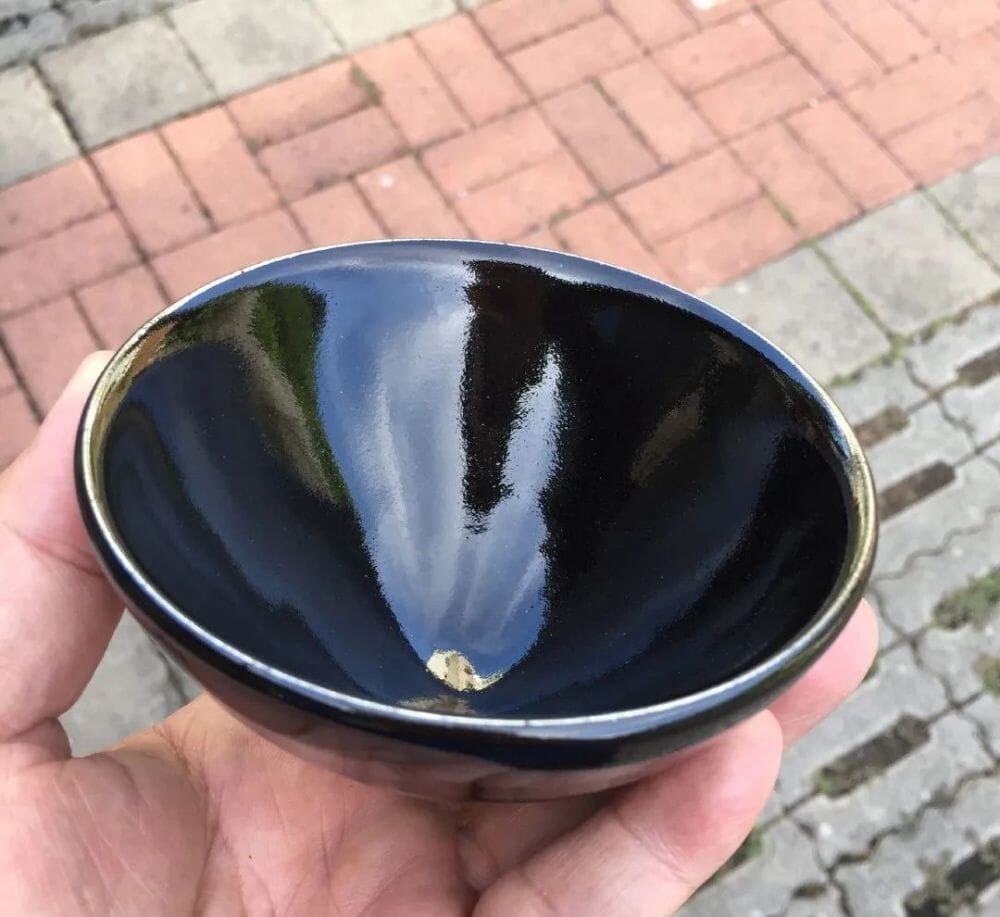
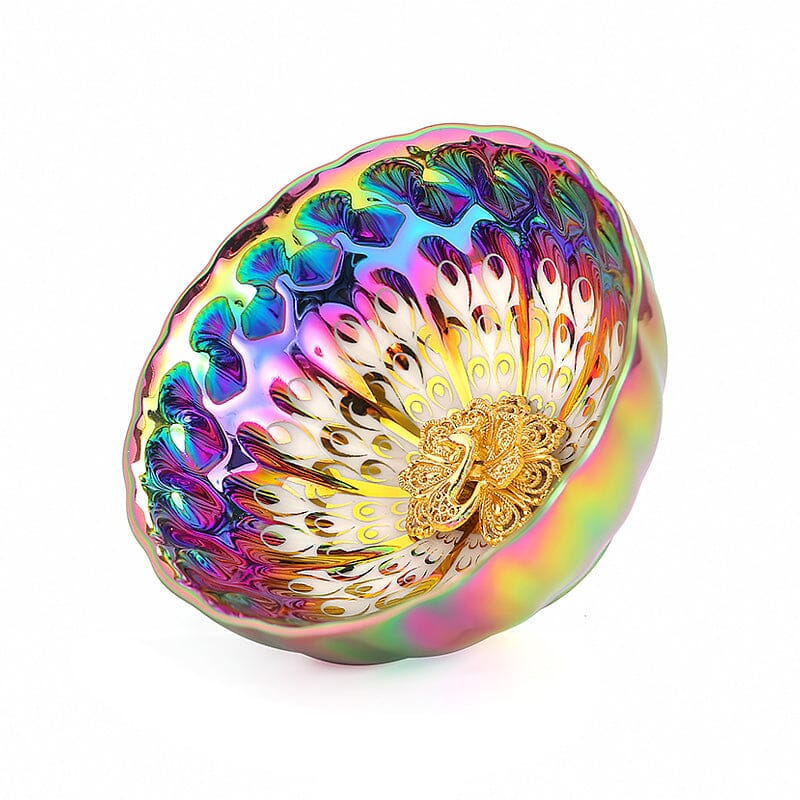
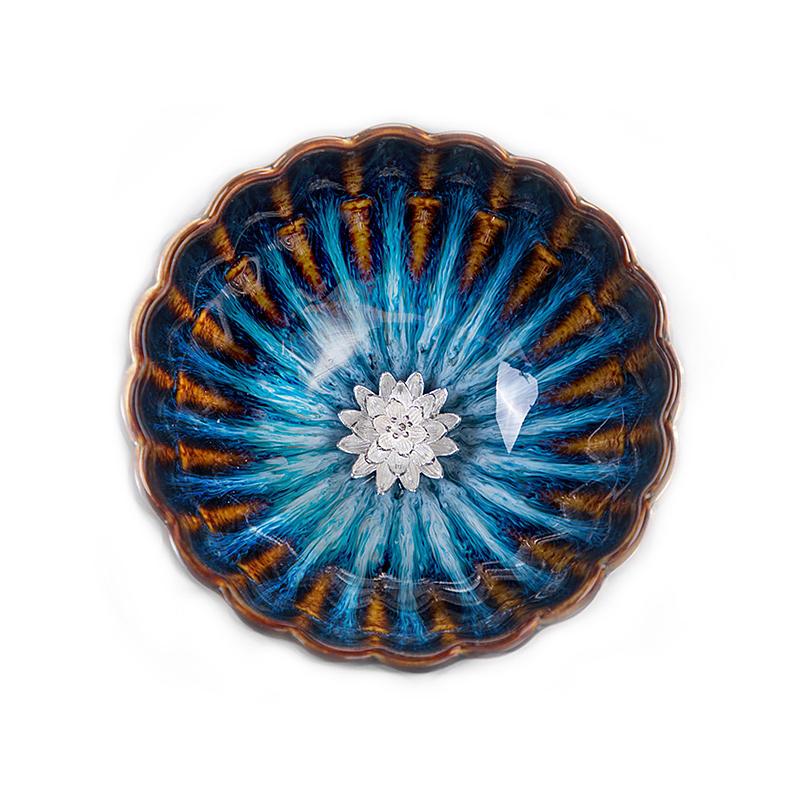
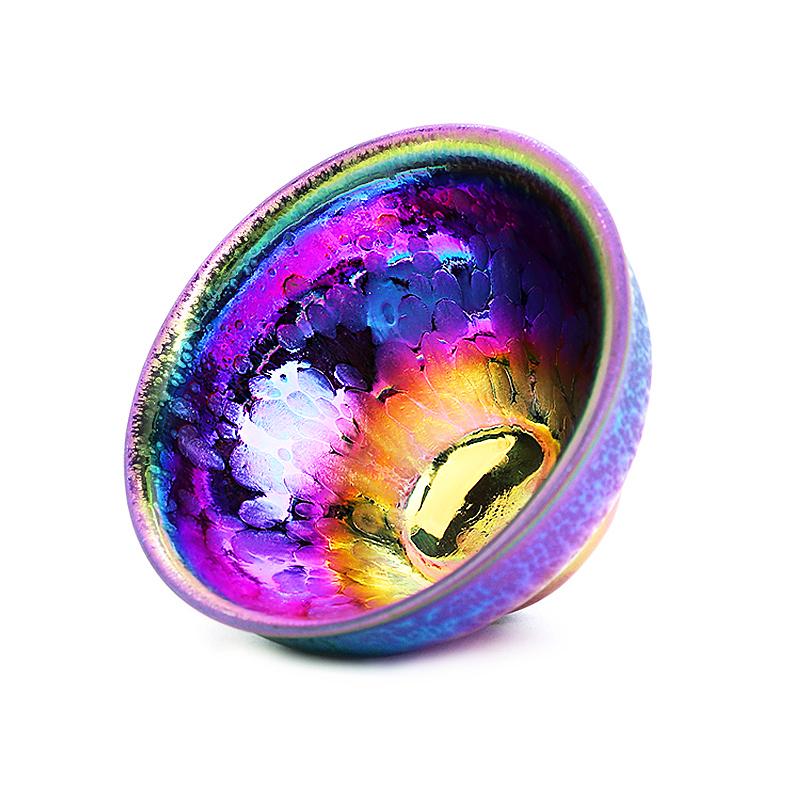
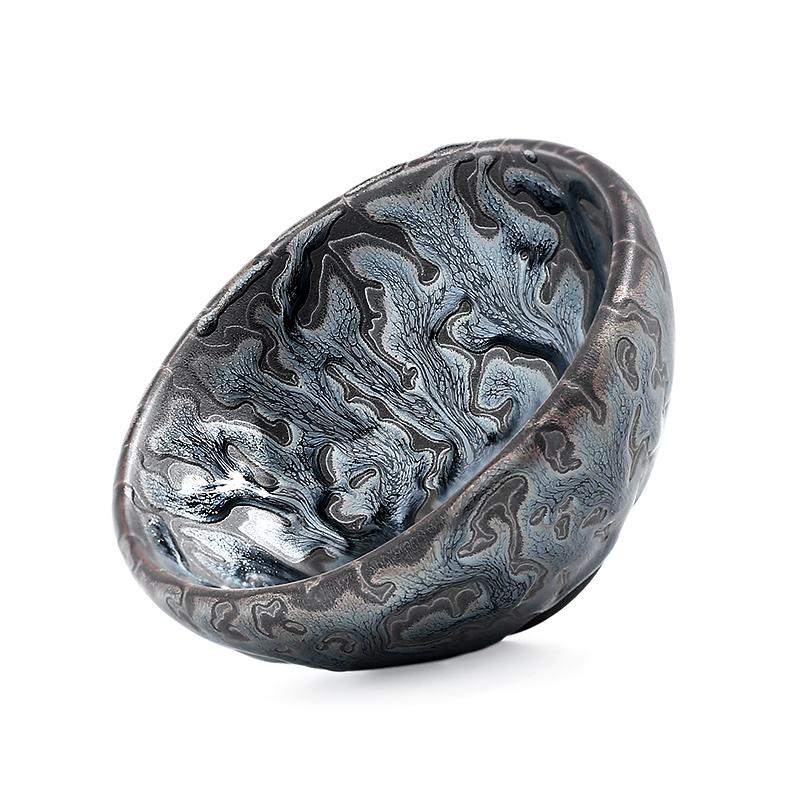
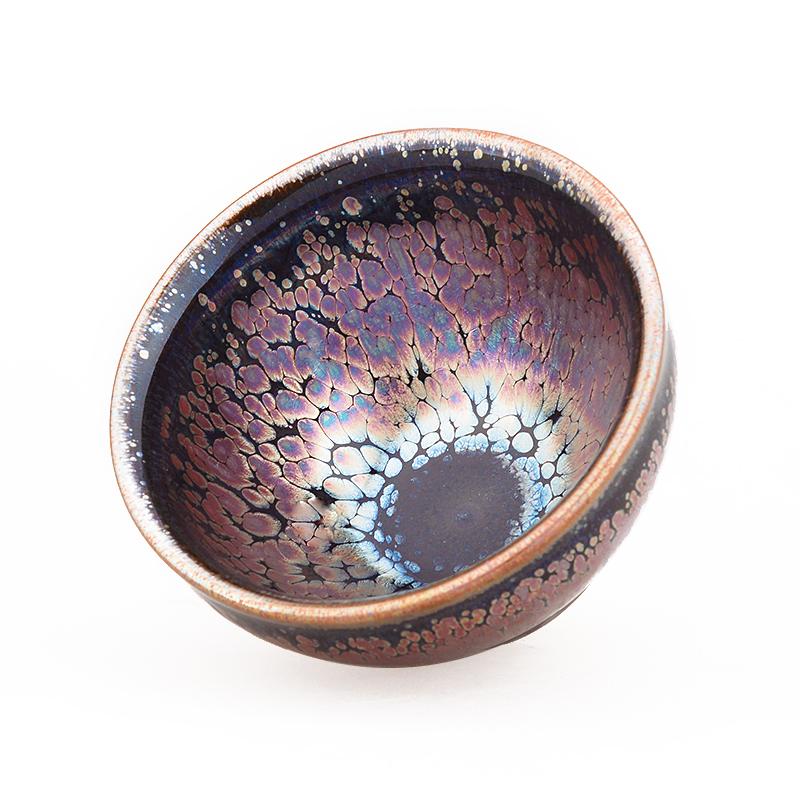
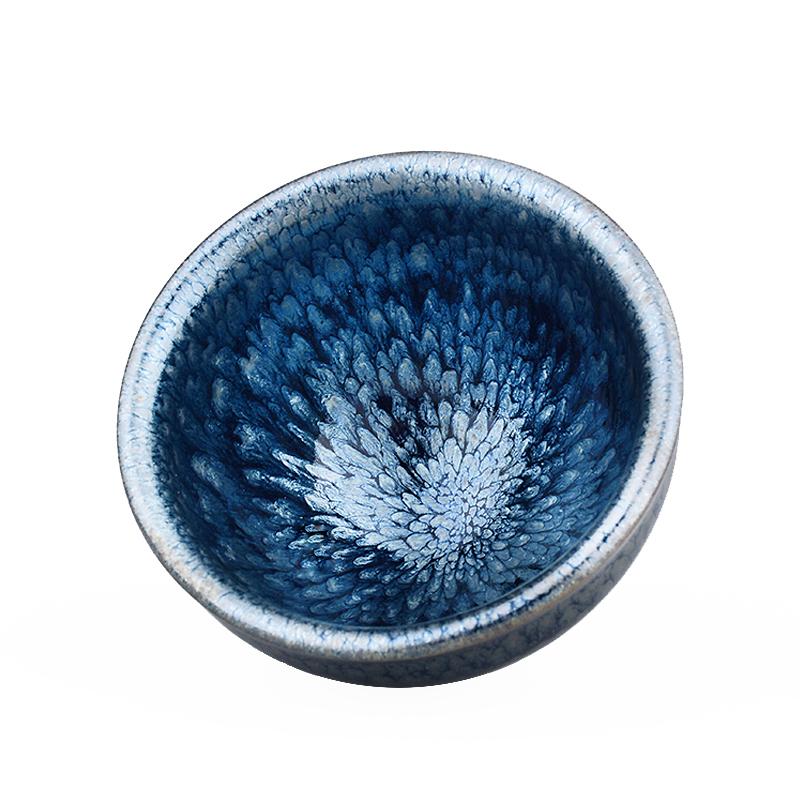
Share:
Discussions on the Issue of "Crackles" on Tenmoku
Tenmoku Worth Collecting? The 3 Must-Have Traits